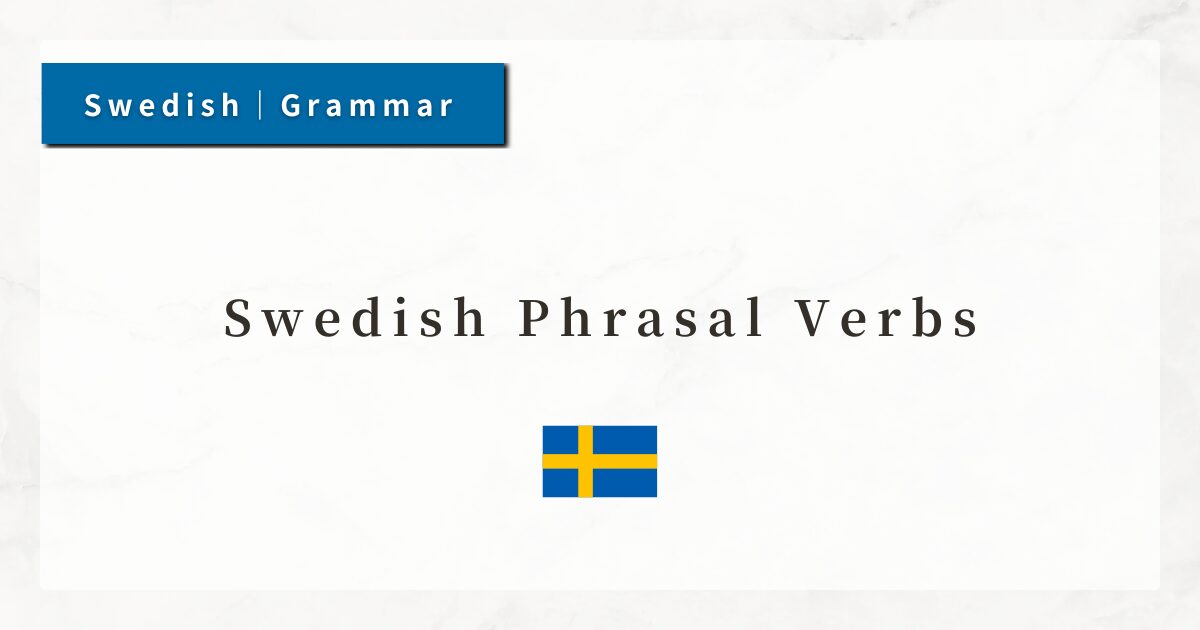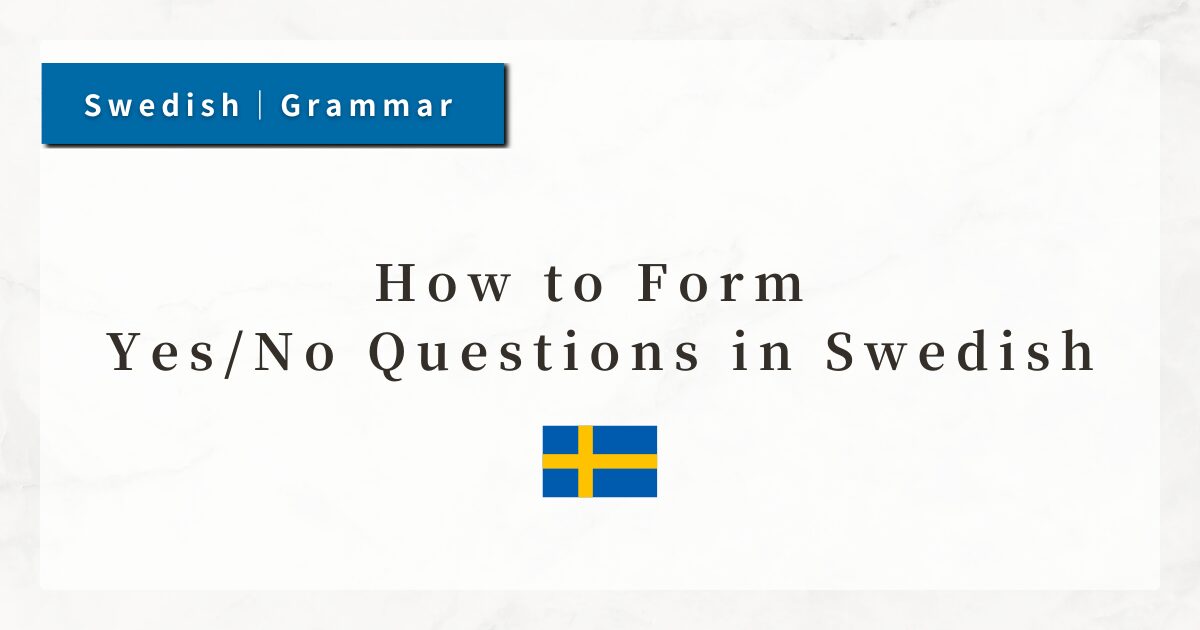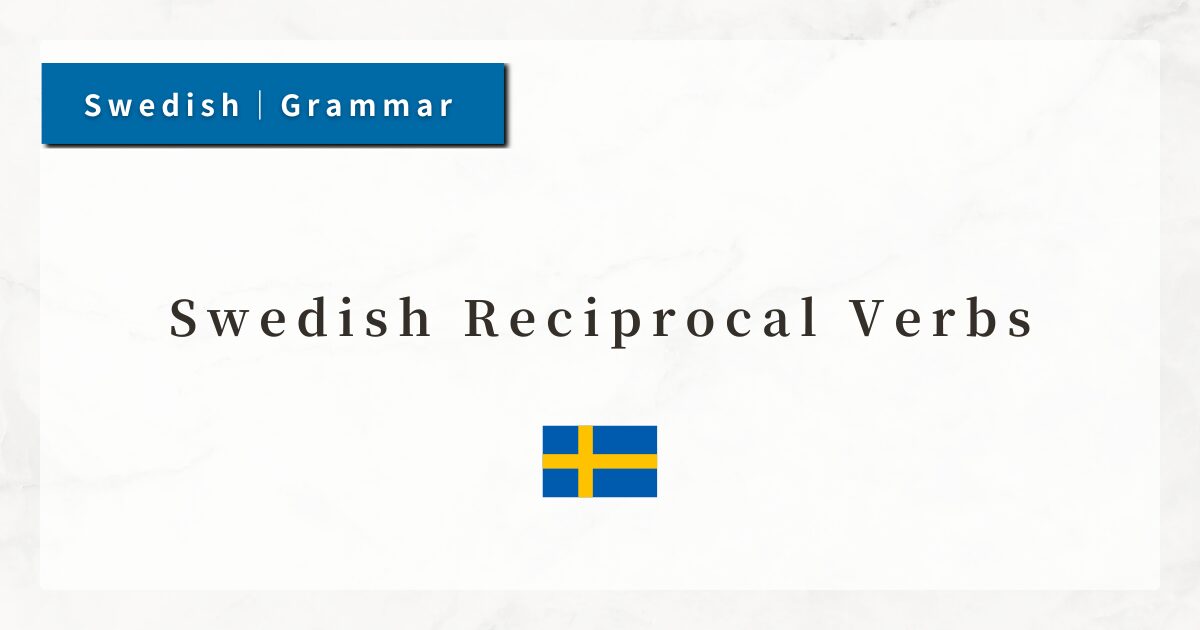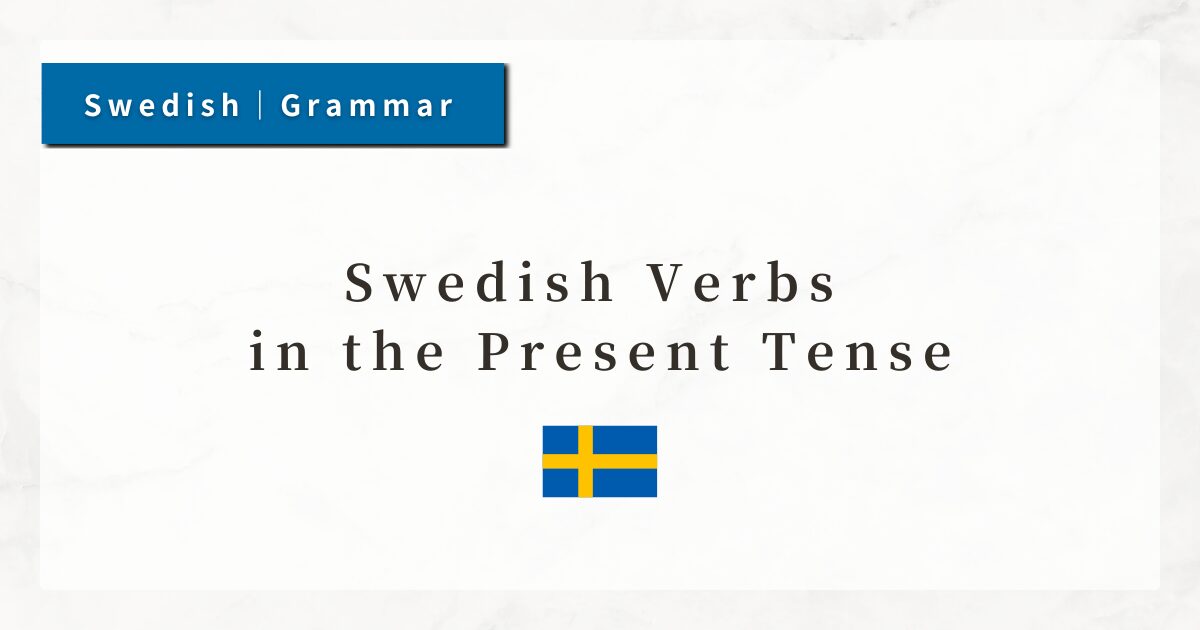#3 The Verb är in Swedish|Meaning and Usage with Examples
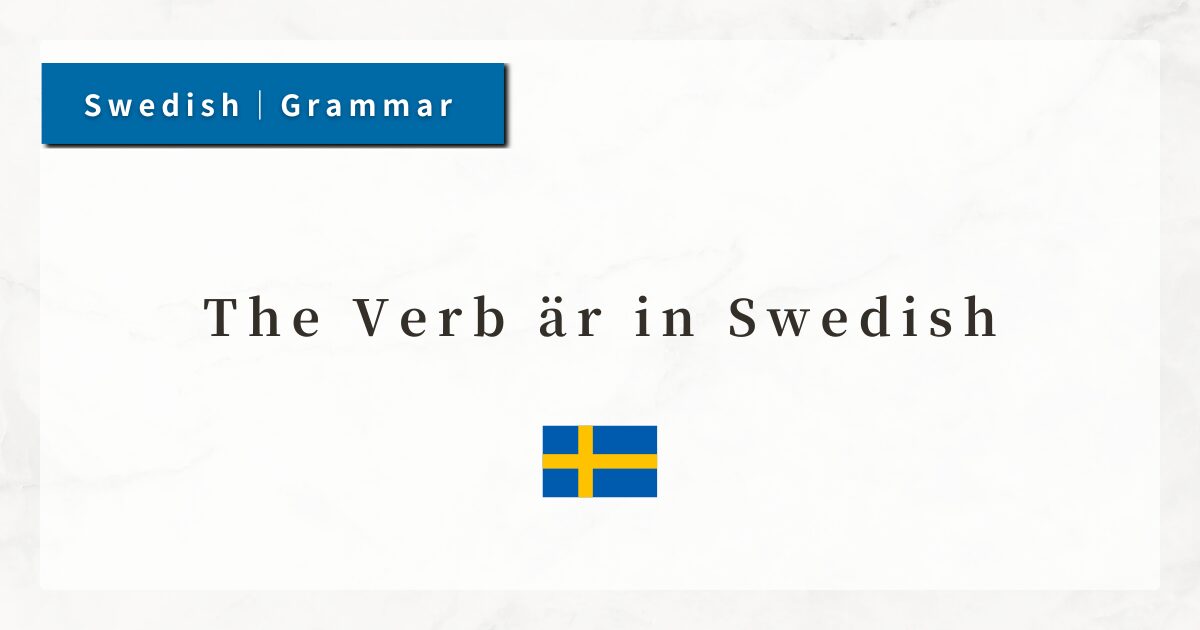
In Swedish, är is the present tense form of the verb vara (“to be”), equivalent to the English verb be (am / is / are). It is used in sentences that describe existence or state, such as “to be,” “to be located,” or “to be in a certain condition.”
In this lesson, I will explain the basic uses of är, focusing on how it is combined with different subjects.
Through examples commonly used in everyday conversation—such as self-introductions, professions, locations, and expressions of emotion—you will learn how to use är with confidence.
1. Present Tense of vara: är
In Swedish, är is the present tense form of the verb vara (“to be, to exist”), corresponding to the English be verb (am / is / are).
It is one of the most basic and important verbs in the language, used in a wide variety of contexts: self-introductions, professions, emotions, locations, and more.
Examples:
- Jag är trött.
(I am tired.) - Hon är läkare.
(She is a doctor.) - Vi är i Sverige.
(We are in Sweden.)
All of these sentences follow the structure “Subject + är + Complement” (noun, adjective, prepositional phrase, etc.).
2. Using är with All Subjects
One major feature of är is that its form does not change depending on the subject.
In English, the be verb changes form (I am / you are / he is), but in Swedish, är is always used.
Examples with different subjects:
- Jag är glad
. (I am happy.) - Du är snäll.
(You are kind.) - Han är trött.
(He is tired.) - Vi är vänner.
(We are friends.) - Ni är nya här.
(You are new here.) - De är hemma.
(They are at home.)
Because är stays the same regardless of the subject, it is especially easy for beginners to remember.
3. Common Patterns with är
är can be followed by a noun, adjective, or prepositional phrase to form meaningful sentences.
3-1. Professions or Roles
- Jag är student.
(I am a student.) - Han är läkare.
(He is a doctor.)
In Swedish, professions and roles are generally stated without an article, unlike in English (“a doctor”).
3-2. Emotions or Qualities (Adjectives)
- Du är arg.
(You are angry.) - Hon är vacker.
(She is beautiful.) - Vi är lyckliga.
(We are happy.)
The form of the adjective may change depending on the gender and number of the subject (e.g., glad → glada). This will be explained in a separate lesson.
3-3. Existence or Location (Prepositional Phrases)
- Han är på jobbet.
(He is at work.) - De är hemma.
(They are at home.) - Boken är på bordet.
(The book is on the table.)
In this way, är can describe the presence or location of not only people but also objects.
4. Word Order with är
Swedish word order generally follows the Subject (S) + Verb (V) + Complement (O) pattern.
Thus, är is always placed immediately after the subject, forming the structure Subject + är + Noun / Adjective / Prepositional Phrase.
- Jag är lärare.
(I am a teacher.) - Ni är glada.
(You are happy.) - Katten är på stolen.
(The cat is on the chair.)
This structure is very similar to English, so it will feel natural to English learners.
Furthermore, since the be verb in Swedish does not change form, it can be considered less confusing than in English.
5. Comparison with English: am / is / are
In English, the be verb changes according to the subject, while in Swedish, är is used for all persons.
| English | Swedish |
|---|---|
| I am tired. | Jag är trött. |
| He is a doctor. | Han är läkare. |
| We are in Sweden. | Vi är i Sverige. |
There is no need to memorize different verb forms for each pronoun. Instead, it is important to maintain the correct word order (Subject + är + Complement).
6. Summary
- är is the present tense form of the Swedish be verb, used to express existence, state, profession, emotions, and location.
- Its form never changes—är is used with all subjects.
- It can be followed by a noun, adjective, or prepositional phrase to form natural sentences.
- Word order generally follows S + V + O (Subject + Verb + Complement).
- While similar to English in structure, Swedish has a simpler conjugation system.

